ARTICLE AD BOX

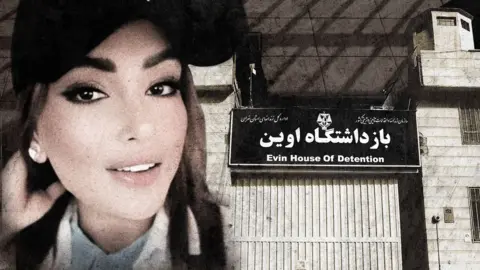 BBC
BBC
Crouched alone on the floor, in a tiny, windowless cell, Nasim could hear what sounded like other prisoners being tortured. The guard would bang on the door and say: "Can you hear that beating? Get ready, you're next."
She was "interrogated for 10 to 12 hours every day" and repeatedly threatened with execution.
The bare cell, no more than two metres across, had no bed or toilet. Four months in solitary confinement was the 36-year-old hairdresser's introduction to Iran's notorious Evin prison. The only people she saw were her interrogators. She thought that she would "die and no-one would know".
We have pieced together accounts from multiple reliable sources to build a picture of everyday life for Nasim and other women, who are currently being held in Evin prison.
Many were among the tens of thousands of people arrested in connection with the "Woman, Life, Freedom" protests that followed the death of 22-year-old Mahsa Amini in September 2022. Mahsa had been arrested for allegedly breaking Iranian laws that require women to wear the hijab and she died in police custody.
While people have spoken about conditions in Evin after they have been released, it is rare to get details of inmates' lives while they are still inside.

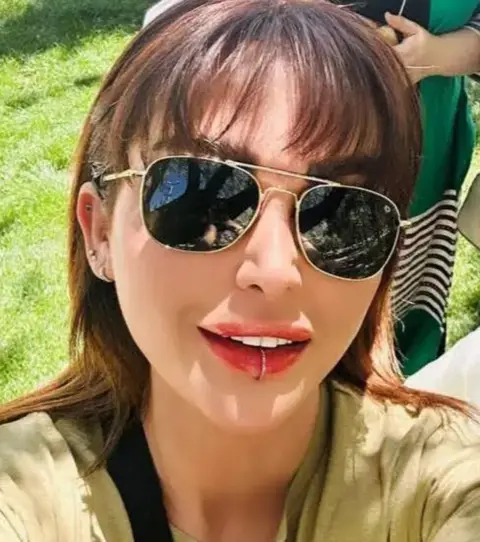 UGC
UGC
Nasim worked as a hairdresser before she was arrested in April 2023
What we have heard reveals not only brutality, but a place of complex contrasts where the prisoners continue to campaign for women's rights and defiantly challenge restrictions imposed on them. There are surprising moments too - one inmate, occasionally allowed time alone with her husband, has even got pregnant.
Nasim - who loves rap music and make-up - was taken into custody in April 2023 after joining protests with her friends, one of whom was killed in the government crackdown. She survived interrogations "by thinking about those who died on the street". People who saw Nasim when she came out of solitary confinement have described cuts and bruises on her body and how she was tortured to make false confessions.
Rezvaneh was also arrested following the protests, along with her husband, in 2023. They both ended up in Evin, which has separate sections for men and women. Her interrogators said they would kill her husband and "hit him so much that he would turn black like coal, and purple like an aubergine".
After solitary confinement, interrogations and humiliation, Nasim was moved to the women's wing, that houses about 70 people, including Rezvaneh, most of whom were arrested on political charges.

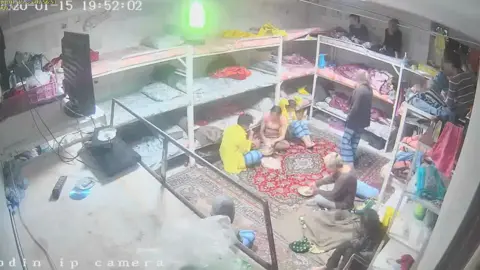 Evin prison CCTV
Evin prison CCTV
CCTV footage of a cell for trans inmates in Evin prison was leaked in 2020 - it is similar to the cells in the main women's wing
It is where the British-Iranian citizen Nazanin Zaghari-Ratcilffe, who was allowed to return to the UK in 2022, spent nearly four years of her sentence.
Most of the women there have been sentenced because of their activism, for offences including spreading propaganda, drawing arms against the regime, and endangering national security.
They live in four crowded cells with up to 20 people in each one and bunk beds stacked three- high.
Living together in cramped quarters often causes friction, and sometimes fights - both physical and verbal - break out. But the women also forge tight bonds.
In winter, "everyone is freezing" and the women "walk around with hot water bottles" to stay warm. In summer, they swelter in the heat.
There is a small kitchen area with a couple of hobs where - if they have enough money to buy food from the prison shop - they can cook for themselves to supplement the basic prison meals that are brought to their cells.
A dark, dirty area at the end of a corridor serves as a place to smoke. A small cemented yard with a little area for plants and a volleyball net provides a bit of outside space.

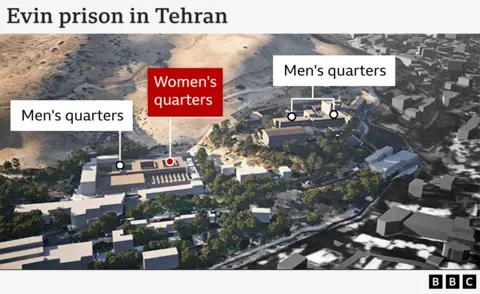
They can wear their own clothes and are free to move around their living quarters which have two bathrooms. Every evening, they queue to use the toilet and brush their teeth.
It was here, after she had been in prison for about four months, that Rezvaneh found out she was pregnant.
She had struggled with infertility for years and had given up on ever having a baby. But according to Evin's rules, she and her husband - who is still a prisoner in the men's wing - were occasionally allowed to meet in private and, on one of these occasions, she conceived.
When she realised she was pregnant she "cried for several days".
She found "the worst thing was the mental pressure and tensions inside the prison". Finding a quiet place in the crowded cells, where people spend most of their days sitting on their beds, was a constant challenge.
The prison food left her craving apple juice, bread, and meat, which were hard to get hold of. When she could get some meat from the prison shop it was at least twice the price of meat on the outside.
The prison eventually allowed her to have an ultrasound scan at four months, and doctors told her she was having a girl.
As she listened to "each heartbeat the sense of hope became stronger". But she was afraid that the conditions in prison would endanger the baby's health. Rezvaneh was not just concerned about her diet - she has epilepsy and needed to avoid stress. Prison doctors told her she had a high risk of miscarriage.
An account of Rezvaneh's pregnancy and the birth of her child, voiced by an actor and narrated by Nazanin Zaghari-Ratcliffe
Vida, a journalist, loves to paint. She uses bedsheets for canvases and paints portraits of the other women.
One, which was smuggled out of Evin, is of Kurdish prisoner Pakhshan Azizi who travelled to Kurdish areas of Iraq and Syria to help victims of the Islamic State group. Pakhshan has been sentenced to death, following charges of using arms to fight the Iranian regime, and there is great concern this sentence could be carried out soon.
Vida has been warned not to draw anything with a hidden meaning. On one of the walls in the yard she painted crumbling bricks with a green forest behind them. The authorities sprayed over it.
In a corridor she painted a picture of an Iranian cheetah running. Some of the women "kept saying how much good energy they got from it". But one night the authorities "went and painted over it" and restricted Vida's access to painting supplies.
One of her murals has been left intact though - huge, blue ocean waves on the walls of the corridor where the women go to smoke.

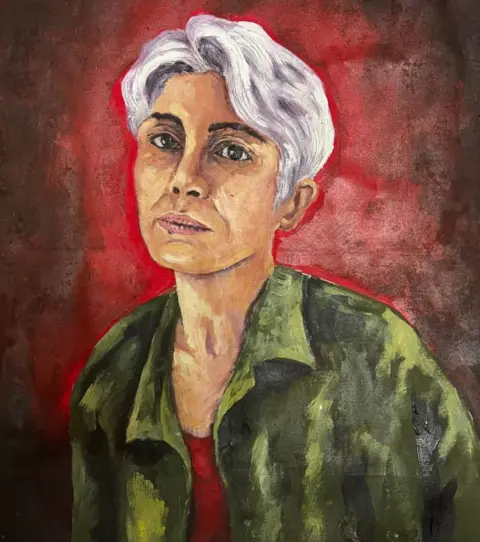 UGC
UGC
Vida's portrait of Pakhshan Azizi, who has been sentenced to death
Getting medical care has been a constant battle for the women. One of the inmates, human rights activist and Nobel Peace Prize winner Narges Mohammadi, has life-threatening heart and lung conditions.
But in prison she has had to fight long and hard for access to a doctor. Relatives said that officials repeatedly blocked treatment because she refused to wear a headscarf to a medical appointment. The authorities only relented after fellow prisoners went on hunger strike for two weeks. Narges was released for 21 days at the start of December on medical grounds.
Behind bars, she and the others have carried out protests, pushing the boundaries and continuing to fight for their rights. Although the law requires them to wear headscarves, many refuse. And after a long fight with the authorities, the women were allowed curtains around the beds so they could have some privacy, out of view of CCTV cameras.
One of the toughest things for the women is waiting to hear their sentences. Nasim's interrogators had threatened her with the death penalty and she had to wait nearly 500 days to find out her fate.
She found solace in her fellow prisoners - who she has described as sisters who give her life and act as "a balm on the wounds" of her wings.
Every morning, one of her friends pulls aside the bed curtain and makes her get up for breakfast.
"Each day we think of something to do, so by the end of the day we can tell ourselves, 'We lived today,'" one of our sources explains.

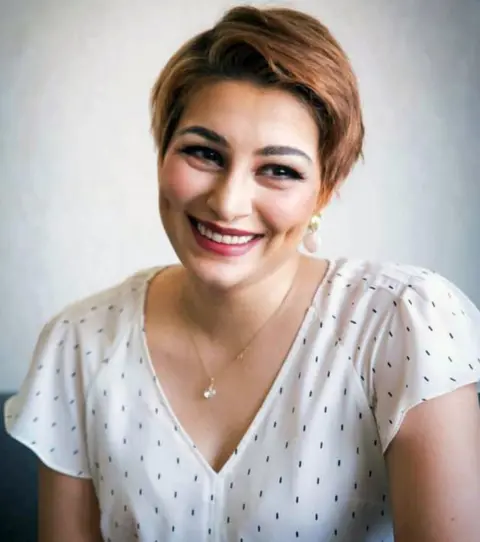 UGC
UGC
Thirty-five-year-old Vida was charged with distributing anti-government propaganda and working against national security
Others spend their time reading poetry, singing, playing homemade card games and watching TV - there are two televisions where they can watch Iranian channels showing drama, documentaries and football.
It is these small things that kept Nasim going while she waited for her sentence, under the constant threat of execution. When the sentence finally came, she was given six years in prison, 74 lashes and 20 years in exile in a small town far from Tehran. She had been charged with distributing propaganda and drawing arms against the Islamic Republic.
Despite the severity of the sentence, Nasim felt she could breathe again, and embrace the life she thought she had lost.
Three other women in the wing have been sentenced to death for drawing arms against the regime or affiliation to armed groups. However one of them has had her sentence overturned.
More than 800 people were executed in Iran last year - the highest number in eight years, according to Amnesty International. Most were for crimes involving violence and drugs. A handful were women.
So every Tuesday, the women protest against executions, chanting in the prison yard, refusing to move all night and staging hunger strikes. The campaign has spread through jails across Iran, gaining international support. On the anniversary of Mahsa Amini's death the women in Evin burned headscarves.
There have been repercussions - sometimes the guards raid their cells and women have been beaten and injured. They can also be taken for further interrogations, put back in solitary confinement or have phone calls and visits blocked. Most of the guards are women and "sometimes they are kind, sometimes they are cruel and hard-hearted, depending on what orders they receive from a higher authority", says one of our sources.
The Iranian government routinely denies allegations of human rights violations, saying conditions inside Evin prison meet all necessary standards and prisoners are not mistreated.

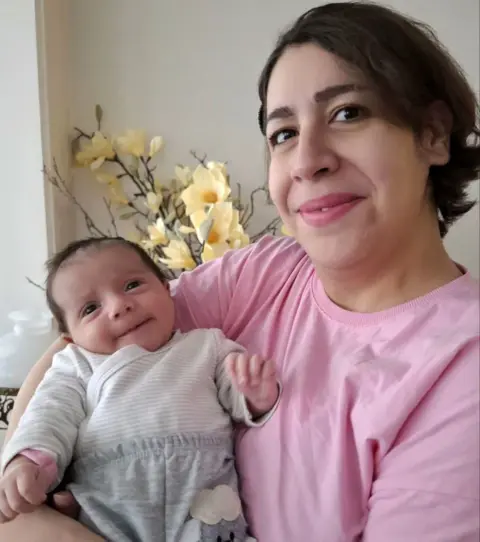 UGC
UGC
Rezvaneh gave birth to a daughter in October
As Rezvaneh's due date approached, the prison authorities allowed her to temporarily leave prison for the birth. In October, she had a baby girl.
But her joy and relief at the safe arrival of her daughter is mingled with fear, sadness and anger. Her husband was not allowed out of prison with her, although she has been able to take their daughter to visit him in Evin.
And because of the stress, Rezvaneh has struggled to produce breastmilk. She is expecting to be recalled to Evin prison soon with her baby daughter to serve the rest of her five-year sentence - if she's not granted an early release, that could be nearly four years.
Babies are usually allowed to stay with their mothers in jail until the age of two. After that they are often sent to a close relative, or if that is not possible, they might be placed in a children's home.
But rather than stop the inmates, one prisoner has said the challenges they face have made her "braver and stronger," supporting their belief that "the future is clear: to fight, even in prison".

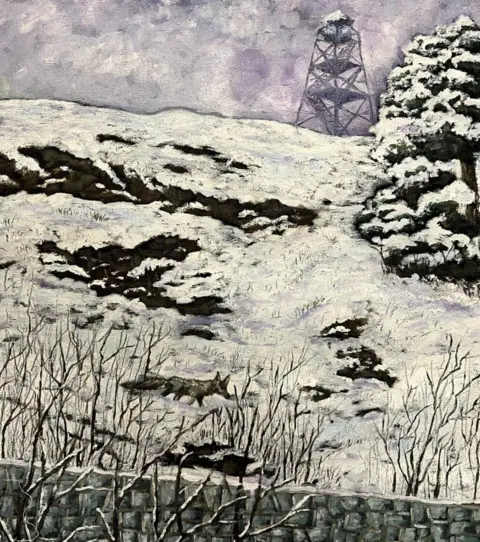 UGC
UGC
One of Vida's paintings shows the hills north of Tehran which can be seen from Evin



 4 weeks ago
8
4 weeks ago
8
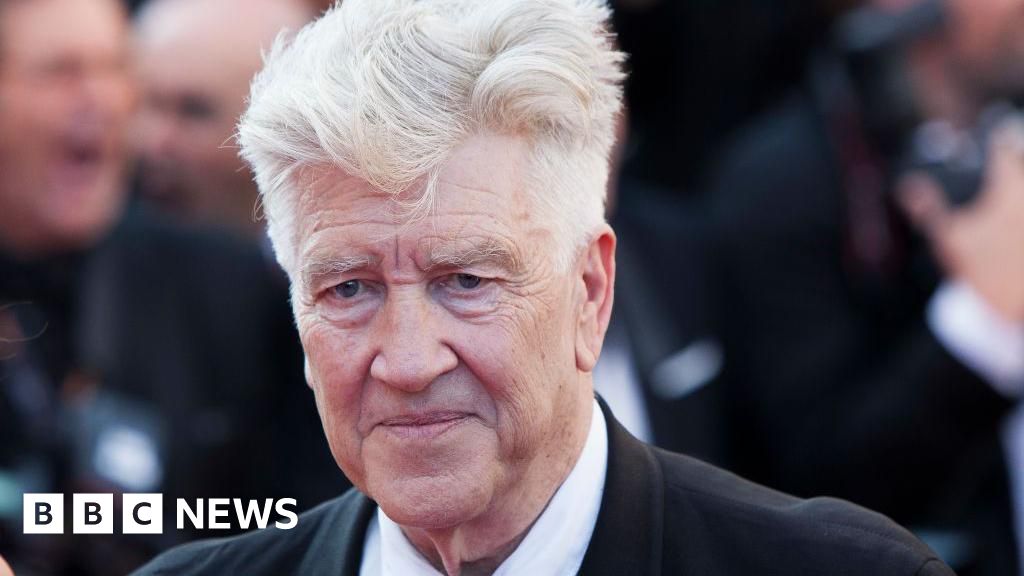
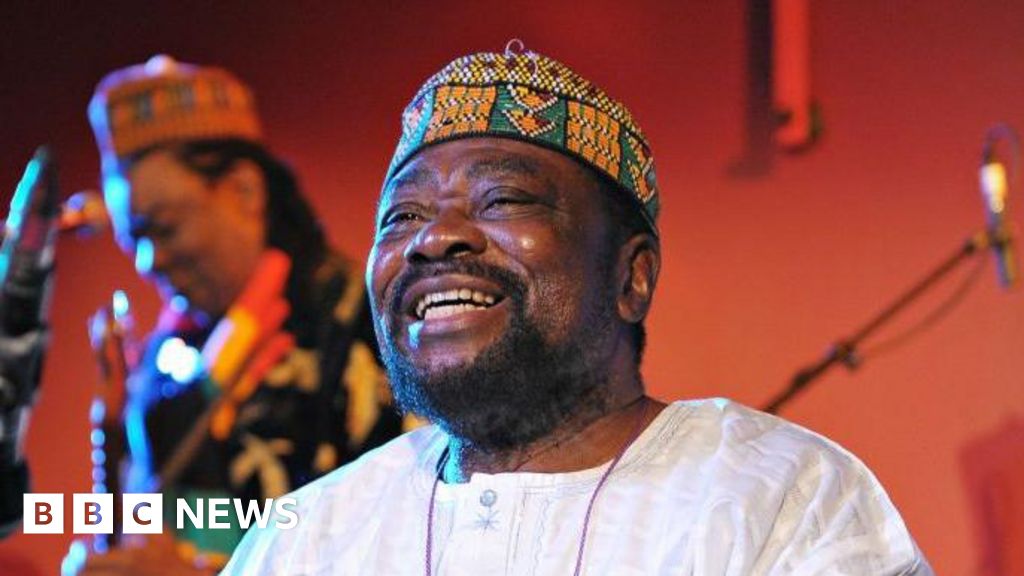






 English (US) ·
English (US) ·